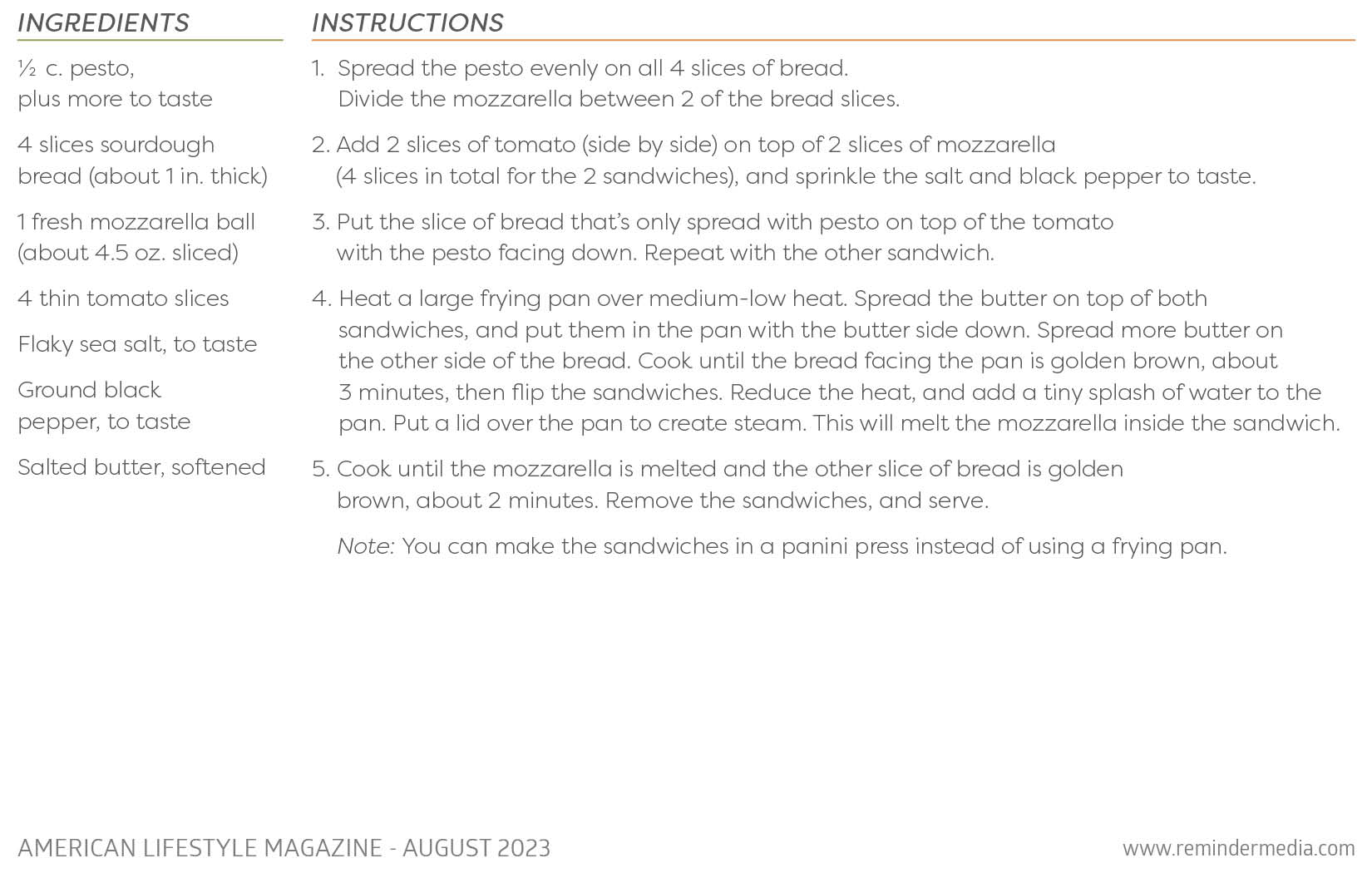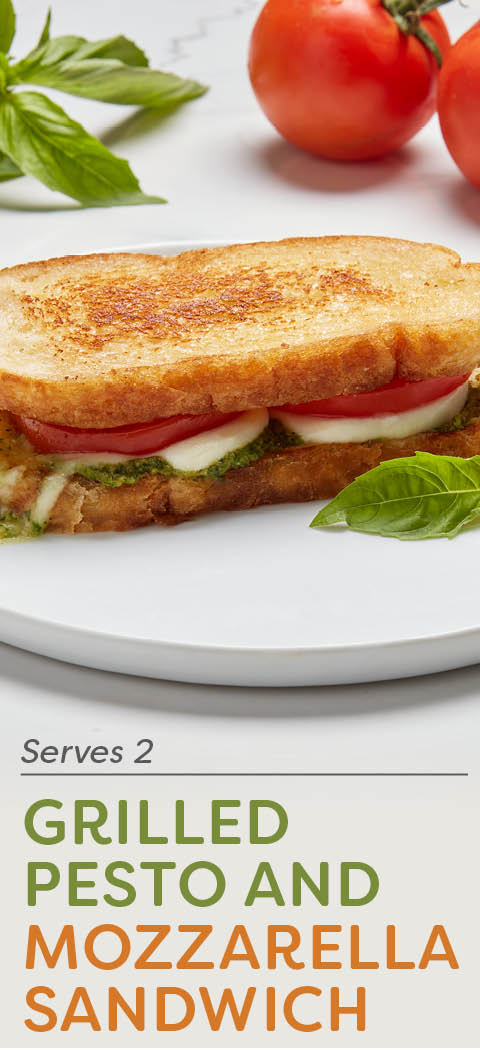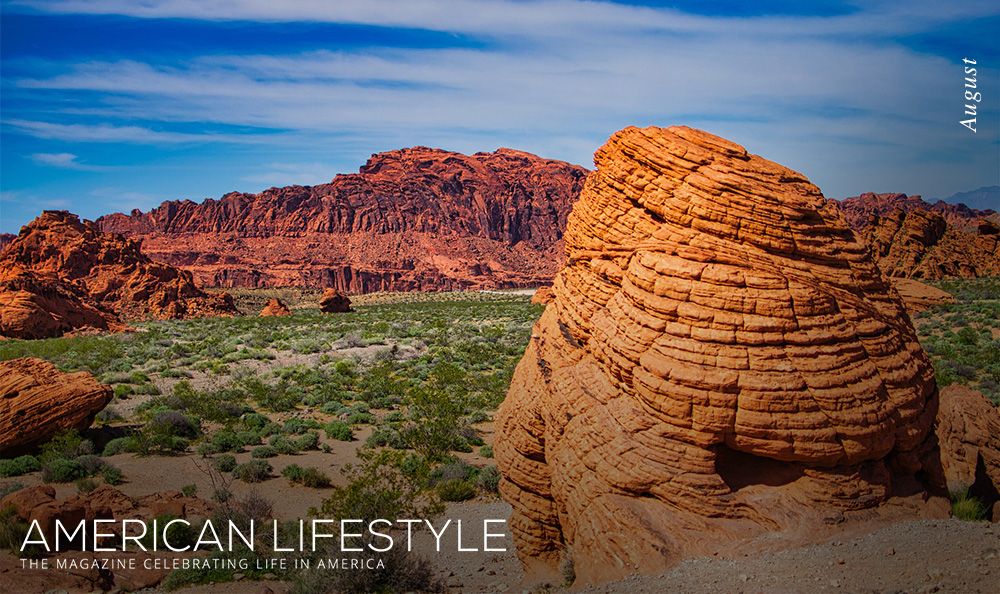The United States has a vast array of majestic mountain vistas, including rugged seaside elevations in Maine, fiery pinnacles in Nevada, and icy peaks in Alaska. If you’re ready to scale new heights, check out these breathtaking destinations.
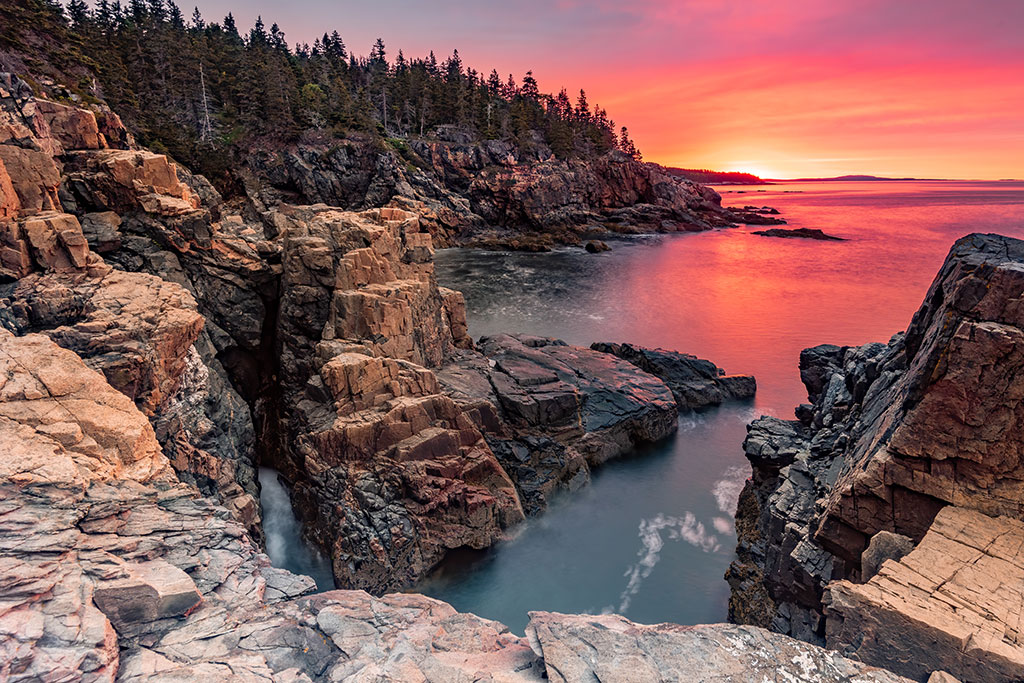
Acadia National Park (Maine)
Anyone who loves both mountain vistas and expansive ocean views should immediately put Acadia National Park—located on Maine’s shoreline—on their travel itinerary. Most of the 47,000 acres of this national park reside on Mount Desert Island, which boasts numerous meadows, forests, and sparkling lakes and ponds along with the resort town of Bar Harbor.
Take a leisurely drive along Acadia’s twenty-seven-mile-long Park Loop Road past mountain views and rocky coastline to reach Cadillac Mountain, the highest point on the North Atlantic coast at 1,530 feet. Along the way, stop at Otter Cliff, a pink-granite precipice that juts more than one hundred feet above the ocean. Another option is to hop on the fare-free Island Explorer shuttle, which goes to most of the park’s destinations. (It does miss some must-see spots, though, most notably Cadillac Summit Road.)
You can also enjoy forty-five miles of rustic carriage roads closed to motorized vehicles by traversing them on foot, via bicycle, or even in a horse-drawn carriage.
Before you go: Purchase a park entrance pass; if you plan to drive Cadillac Summit Road, you’ll need to purchase a vehicle reservation as well. Both are available at recreation.gov.
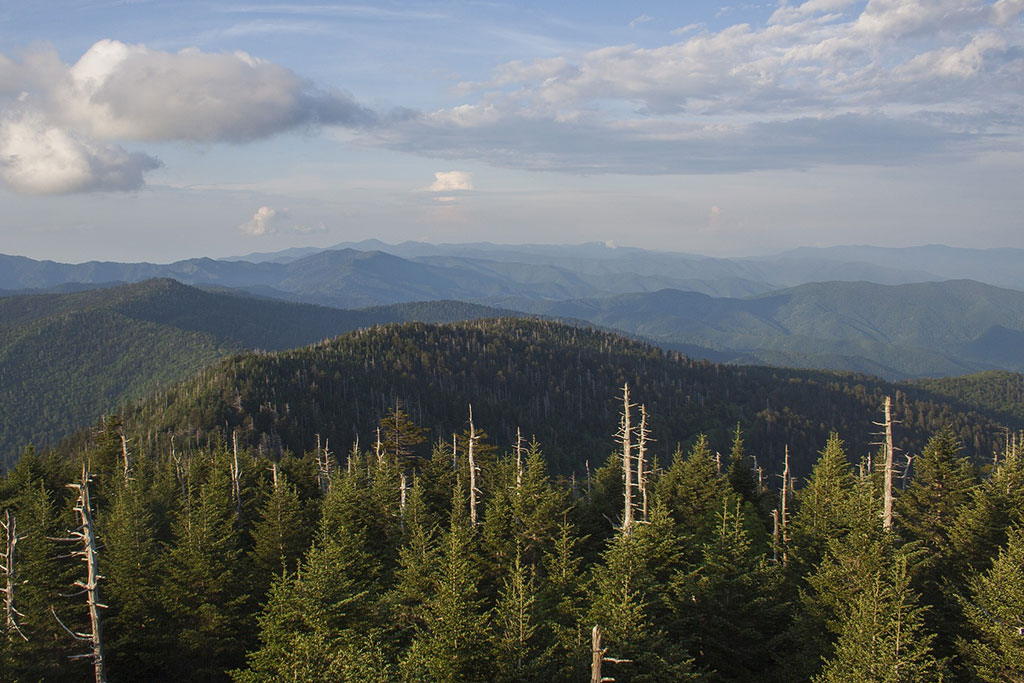
Great Smoky Mountains National Park (North Carolina/Tennessee)
This national park, stretching across 522,427 acres, is the most visited in America, and it’s easy to see why. Its idyllic expanse traverses North Carolina and Tennessee and includes babbling streams, waterfalls, flower-filled meadows, quiet forests, and some of the tallest peaks east of the Mississippi River. These summits belong to the Blue Ridge Mountains, which are famous for their characteristically hazy blue appearance and are part of the greater Appalachian Mountain range.
During your visit, be sure to hike or drive up to Clingmans Dome, the park’s highest point, for 360-degree views from its observation tower. The Appalachian Trail, which runs for seventy-one miles through the park, is one of several hiking trails that lead to this peak.
Before you go: While no admission fee is required, you will need to buy a parking tag, available at recreation.gov. The park is open year-round, but the road to Clingmans Dome closes from December to April, so if you plan to visit the site during those months, prepare for a much longer hike!
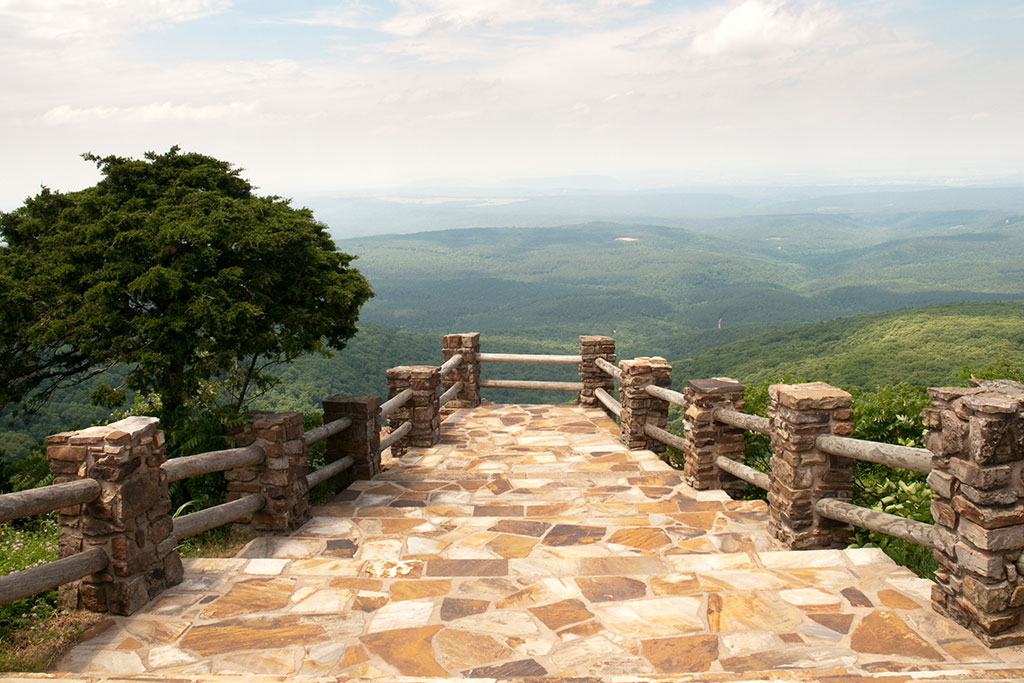
Mount Magazine State Park (Arkansas)
At a dizzying 2,753 feet, Mount Magazine in Arkansas is the state’s highest point and can be reached by driving the picturesque Mount Magazine Scenic Byway through the Ozark-St. Francis National Forest. The state park offers picture-worthy panoramas of lush forests and the Arkansas River Valley, plus ample opportunities for rock climbing, wildlife watching, camping, and horseback riding. Or you can lace up your walking shoes and take the 1.5-mile, moderately difficult hiking trail up to Signal Hill, the loftiest point on the mountain.
If you’re interested in an extended stay, the park boasts a resort mountain lodge along with thirteen fully equipped cabins, all of which overlook the Petit Jean River Valley and Blue Mountain Lake. It also offers eighteen campsites, each with water, electric, and sewer hookups.
Before you go: Admission is free for all fifty-two state parks in Arkansas. Peak season is March through November, though any time of year is good to visit—year-round temperatures average around 56 degrees and rarely exceed 90 degrees in summer.
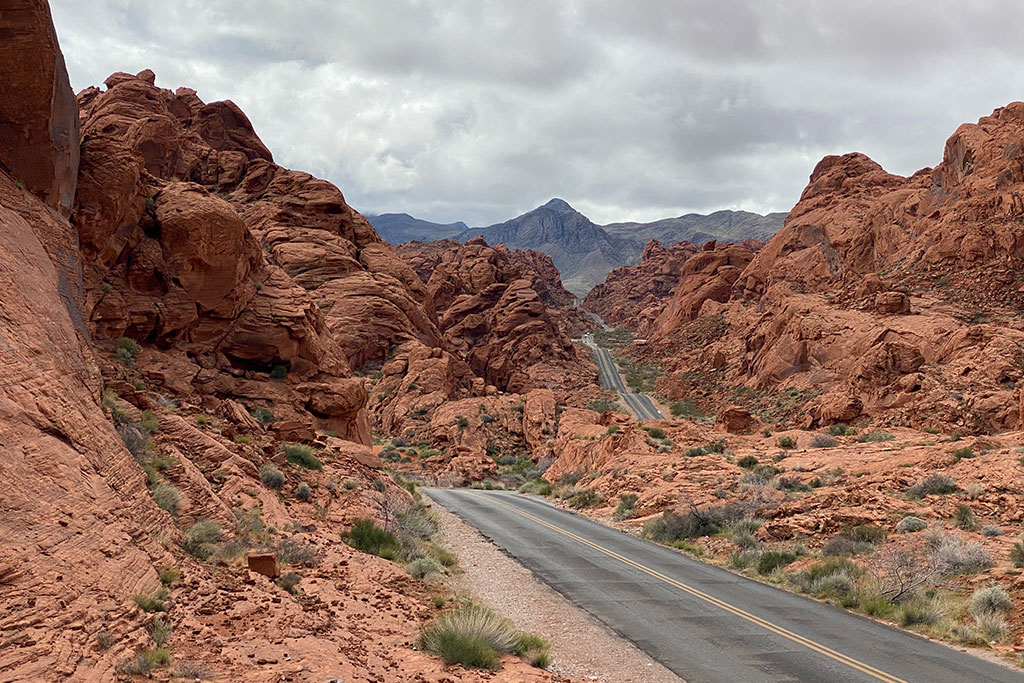
Valley of Fire State Park (Nevada)
Nestled in Nevada’s Mojave Desert less than an hour northeast of Las Vegas, this jaw-dropping natural area offers views of the rugged limestone Muddy Mountains. It also boasts 40,000 acres of red sandstone formations that look so brilliant, they appear to be on fire—hence the name. Amazingly, these vivid outcrops got their start during the Jurassic period, forming 150 million years ago from minerals, pressure, and shifting sand.
A hike or drive through this seemingly endless natural area will give you the best opportunity to experience its beauty, including the 2,000-year-old prehistoric petroglyphs carved into the desert rocks. And if that’s not enough, you can always take a visit to the nearby Lake Mead National Recreation area for some swimming, fishing, camping, or hiking.
Before you go: You must pay an admission fee (per vehicle) when you enter the park. While it is open year-round from sunrise to sunset, consider visiting between October and April when the climate is best, especially if you’d prefer to hike through it—from June through August, temperatures can rise to over 100 degrees.
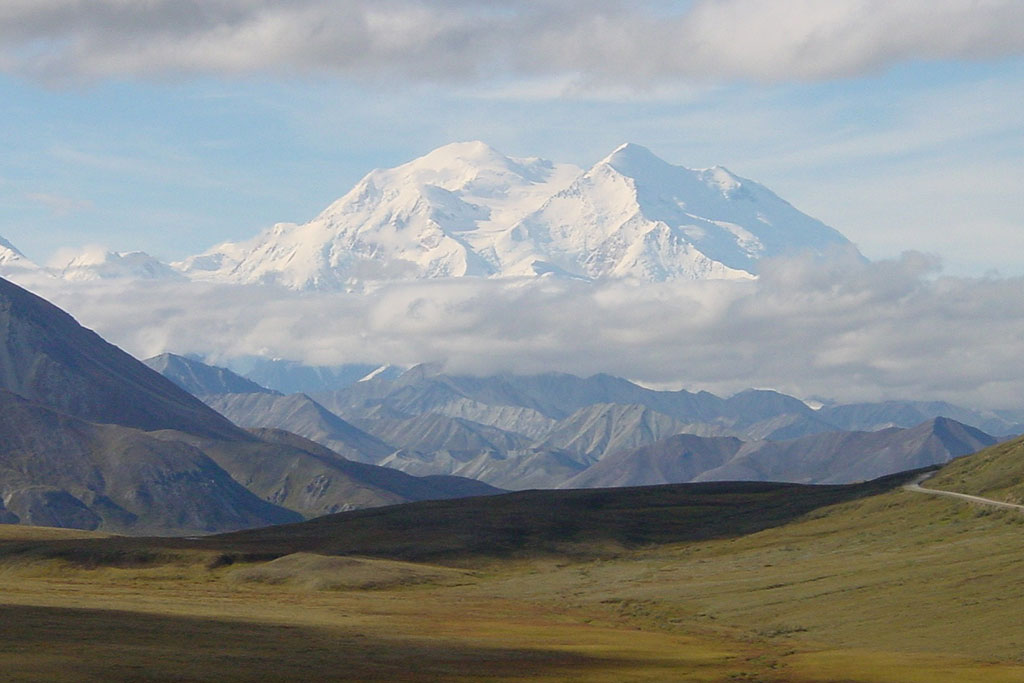
Denali National Park and Preserve (Alaska)
The greatest of North American peaks is undoubtedly Denali, which translates to “the high one” or “the great one.” Formerly known as Mount McKinley, this perennially snow-capped glacial mountain is the continent’s highest, towering over the Alaskan landscape at more than 20,000 feet.
While Denali’s peaks are visible from many points in Alaska, even in distant Anchorage, the ultimate way to enjoy its impressive beauty is to see it up close in Denali National Park and Preserve. Be sure to purchase a ride on one of the available bus tours; much of the single ninety-two-mile road that runs through this natural area’s six million acres is closed to private vehicles. These tours offer plentiful mountain views and opportunities to see the surrounding tundra, forests, and wildlife such as caribou, grizzly bears, moose, and eagles. If you prefer to enjoy Denali’s impressive offerings on foot, you could also navigate any of its thirty-five miles of hiking trails.
Before you go: The park’s road is only open in summer, when average temperatures are about 50 degrees (it can get as low as negative 40 degrees in winter). However, you are still able to visit the park at any time of the year. Admission tickets can be purchased at recreation.gov.
If the views you hope to see are in any of our country’s national parks, consider getting a US Park Pass for annual admittance to more than 2,000 federal recreation sites. That way, you might be able to enjoy all the stunning natural sites you want while keeping your spending low.
There’s nothing quite like the excitement that comes with taking a summer vacation. You plan for weeks, maybe even months, and then set off fully prepped and packed, eager for both the adventure and the chance to escape the stress of your everyday life. No matter how much fun the trip may be, though, it eventually comes to an end, and that means you have to return to reality—and, even worse, unpack.
While coming home, unloading, and putting away your belongings are all unavoidable, you don’t have to dread the postvacation organization process. Instead, look at it as a way to help you ease back into your routine. Make sure you follow these steps to get readjusted sooner rather than later.

Before you even unpack your car, take a walk through your home and check to see how messy or neat it is. If you didn’t have the chance before departing to wipe down your kitchen counters, put away laundry, or remove clutter from your dresser, this is your opportunity to clean those areas so you don’t compound the problem by adding your vacation items. You may not want to take on a full-house cleaning right after traveling, but tidying up high-traffic areas or spaces you know you’ll be using in the unpacking process will help you avoid feeling overwhelmed or stressed by everything you need to do.

While it may be tempting to toss your suitcases and bags into your bedroom and come back to them later, doing so will just make it more likely that they’ll sit there untouched for days or weeks after your trip. Instead of letting them become fixtures in your room that you have to work around, take the time to unpack any suitcases and bags immediately after bringing them inside. Remove all your items, and put them where they belong: in your closet, drawers, laundry basket, bathroom, or kitchen. That way, you don’t end up living out of your travel bags and feeling frustrated when you’re forced to go digging through each one to find an item you really need. And once your travel bags are empty, you can get them out of your way and back into storage ready for your next trip.

After you unpack your things, go ahead and do some laundry. A dirty swimsuit, cover-up, or beach towel that sits in your hamper will get musty quickly, so gather these and any other used items—such as clothes you wore on vacation that you may need in the coming week—and toss them in the washing machine. Just be sure that you don’t let your clean things sit in the dryer for too long. Get them folded and put away immediately after each load is done.

Depending on how long you’ve been away, you may come back home to a large stack of mail or packages that were delivered while you were gone. You’ll want to sort through them soon after returning home, tossing junk mail and immediately opening any important letters or bills. Make note of anything that requires a response or action so you don’t accidentally pay something late or miss an important deadline.

Any time you return from a trip, you’re typically thrown headfirst into your job, school, or parenting routine. If you didn’t take an extra day or two off to help you ease into it, you’ll need to quickly prep for the week ahead. Go through what you have in your fridge, and decide if you need to make a grocery run. Consider ordering ahead for pickup or delivery to save yourself some time and energy. You can use those extra minutes to prep what you need for work, perhaps by laying out an outfit, packing your lunch, and gathering any necessary papers or equipment. And if you have kids, check their schedules for the coming days. Especially with a new school year on the horizon, it’s important to make sure they have everything they need and are ready to go.
Returning home after a summer vacation doesn’t have to be a challenge. It may seem like a lot to tackle at first, but the transition will end up being much easier when you don’t let everything pile up and instead take the steps to organize and clean soon after you get home.
When rainy Seattle swaps out its dreary attitude for its summer persona, one of the best ways to enjoy the sunshine is with a frozen treat from Seattle Pops. With a rotating list of mouthwatering flavors and all-natural, locally sourced ingredients, this neighborhood shop is a popular place for tourists and residents alike.
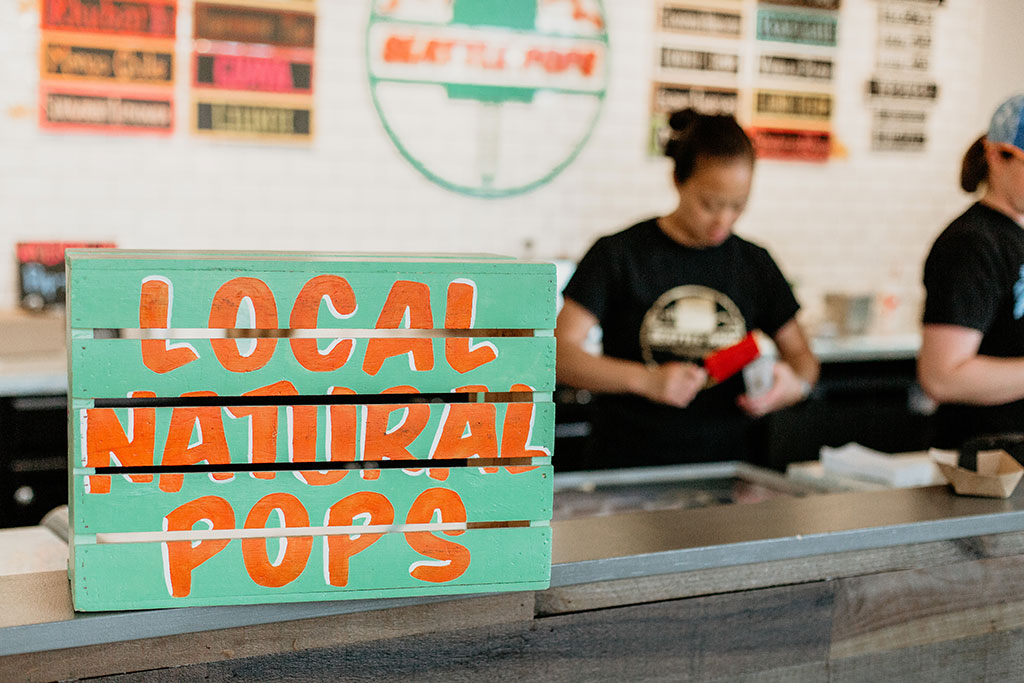
Seattle Pops began as an idea from cofounder Megan Janes while she was living in Birmingham, Alabama, with her wife and cofounder, Suzie Barnes. A serendipitous visit to a pops shop with her best friend gave Janes the thought of bringing something similar back to Seattle, close to where Barnes grew up. Says Janes, “It took about a year and a half to bring the dream of Seattle Pops to fruition. I was not sure how pops would go over in the Seattle area, but I knew it was a foodie city with a focus on hyperlocal sourcing, which aligned perfectly with what I wanted Seattle Pops to be.” She spent a lot of time doing research on almost every aspect of running a frozen treat business, wanting to ensure she was as prepared as possible.
A key part of that prep was recipe development. In the summer of 2013, Janes and her dad spent hours in her aunt’s kitchen testing recipes in ice-cube trays. Some of the first successes were coffee, strawberry, watermelon, and lime. A decade later, those original recipes remain the bases of many of Seattle Pops’ current flavors.
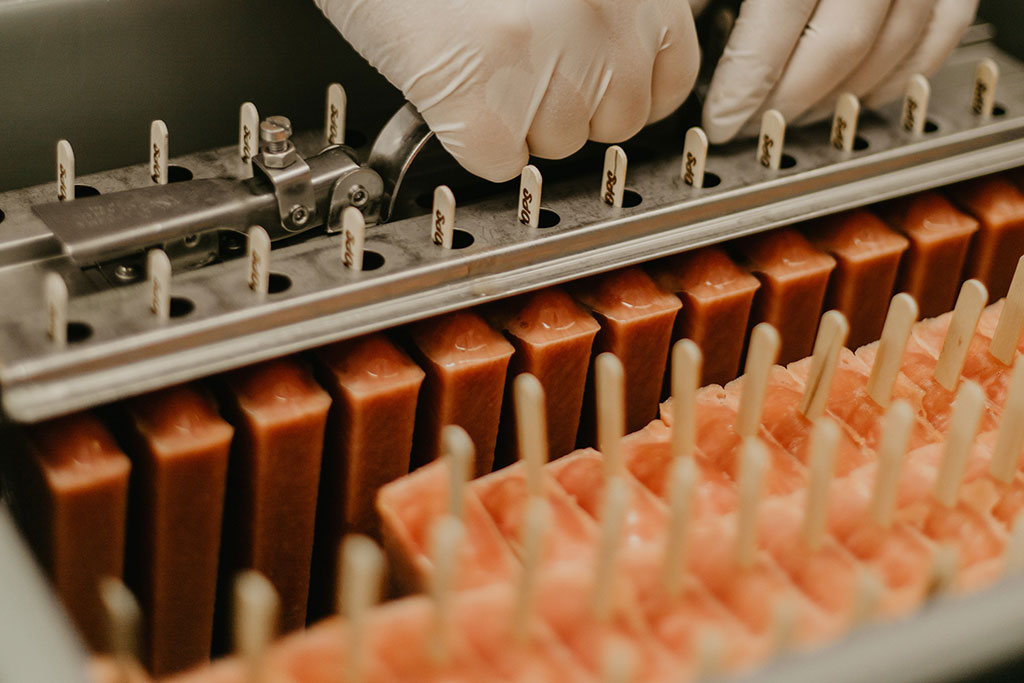
Janes’s initial plan was to open a brick-and-mortar store right from the jump, but due to a lack of resources, she opted to start small selling at local events and farmers markets until she could save enough money for a store and production facility. Janes and Barnes’s first test run was a freezer stand at a block party in the Seattle neighborhood of Phinney Ridge. Rave reviews propelled them to apply to local farmers markets in 2014, and three years later, they were able to open their first storefront in the heart of the Wallingford neighborhood in north-central Seattle. They did much of the labor themselves; Barnes also custom designed all of the signage.
Looking back, Janes recalls the path to a storefront as particularly arduous: “Operating a business that crams most of its sales into five months is full of both challenging and rewarding days. In 2017, we were working on the build-out of the storefront and production facility while also having one of our busiest summers yet. The days were long and exhausting; we were working over one hundred hours a week. But opening our own retail and production facility within three years of starting from scratch was an amazing accomplishment. It was incredible to see so many of our regulars, family, and friends come out for our grand opening.”
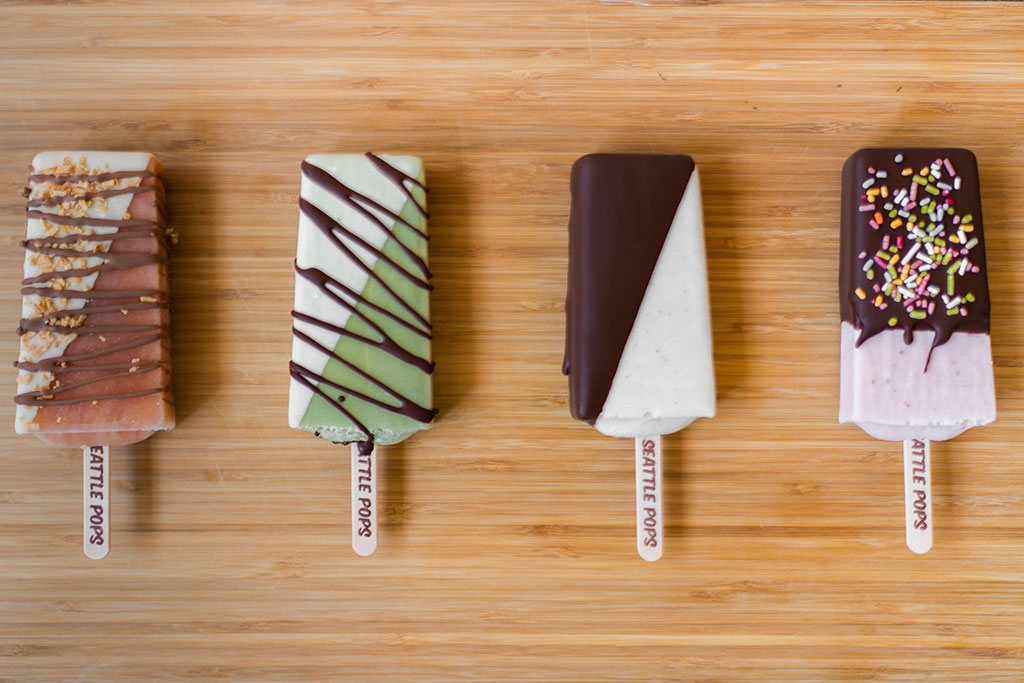
Janes is passionate about focusing on all-natural and local ingredients, which is why most of the fruit Seattle Pops uses is sourced from the state of Washington and the milk for its dairy base comes from Smith Brothers in nearby Kent, Washington. The shop rotates seasonal and specialty flavors into the lineup according to the local produce calendar, while its roster of year-round flavors remains the same. One of its most popular seasonal flavors—Lilikoi Cream (passion-fruit cream)—turned permanent after multiple thumbs-up reviews from customers. Other permanent flavors include Zesty Lime, Very Strawberry, Cookies + Cream, and Local Rotating Coffee. (It is Seattle, after all.) They also offer bakery flavors, such as Vanilla Brownie and Grasshopper Mint Brownie, that have pieces of baked goods inside.
All pops are made in small batches to ensure quality and safety. At its peak, the machine is running for twelve or more hours a day. The frozen treats are created one day and are out the door the next to farmers markets and events—or kept right there in the shop.
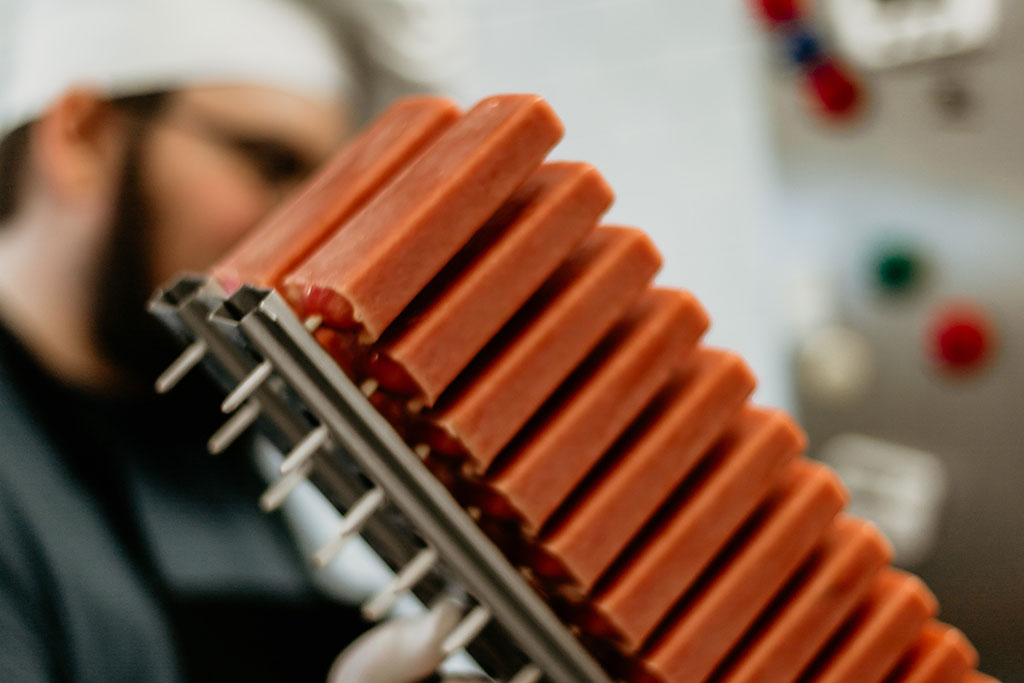
Aside from delicious treats, Seattle Pops supports the local community by helping with public programs. In 2018, it started the Scholar Popper program, which funds scholarships for team members to help with their schooling costs. And each October, it hosts Trick-or-Can to collect nonperishables for the local food bank. Says Janes, “I know firsthand how public programs can help families in need, and I am grateful to be in a position today where I can contribute.”
Janes credits her success to taking things one step at a time and gaining confidence along the way. Her advice to those who want to start a business but don’t know where to begin is to simply try out their ideas. “You don’t have to start with a huge, elaborate opening or unveiling,” she says. “Stick to the basics of offering your product or service, see how it is received, and go from there. I am a big proponent of planning and researching too.”
It also helps to have a great partner. Janes and Barnes work well together, balancing out each other’s strengths. Janes typically handles the behind-the-scenes work like press, social media, and website editing, while Barnes is more hands-on with the store, supporting team members, training staff, and managing gigs and events.
With their sweet treats and open-arms approach to community, it’s easy to see why Seattle Pops quickly became not just a Wallingford institution but a beloved part of the city’s food scene as well.
For more info, visit seattlepops.com
Is there anything more perfect for lunch than a quick sandwich or wrap? It can be made with minimal ingredients while still providing an excellent balance of nutrients, and the best part is it’s absolutely delicious. Give these two recipes from the Simple Food 4 You cookbook a go—your taste buds will thank you!
If you prefer tortillas over bread, you’re guaranteed to enjoy this tasty pressed wrap packed with protein and just a hint of heat thanks to the jalapeño spread.
This seven-ingredient sandwich couldn’t be simpler, but it packs a flavorful punch with a garlicky pesto sauce and fresh, gooey cheese.

Reprinted with permission from Simple Food 4 You by Alexandra Johnsson. Page Street Publishing Co. 2023. Photo credit: Toni Zernik.
recipe by alexandra johnsson
photos by toni zernik
When I first made this wrap, it quickly became my most viewed TikTok video. Today it still is, with more than 80 million views. TikTok even announced that this was the most viewed video in Sweden in 2021. Without knowing it, I started a “tortilla trend” and saw people all over the world re-create this wrap. I still make this all the time, and you’ll never get tired of it because you can substitute ingredients and make this wrap in so many different ways. I’ve turned it into a taco wrap, a burger wrap and also a pizza wrap.
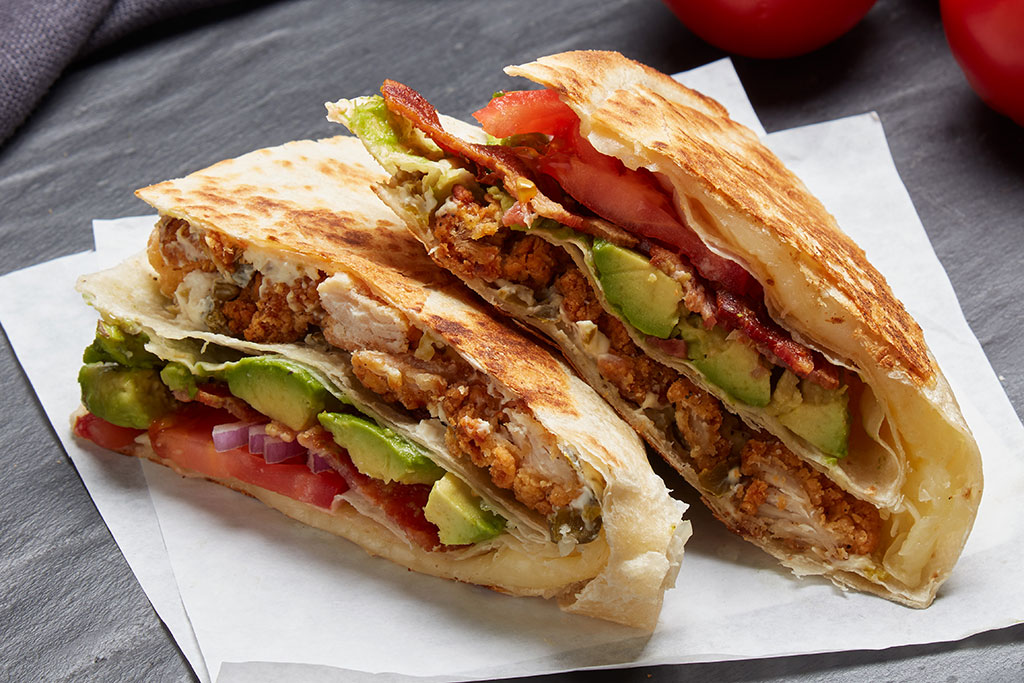
Serves 2
Note: If you don’t have a panini maker, you can use a frying pan. Cook the wraps for about 4 minutes on each side over medium-low heat.
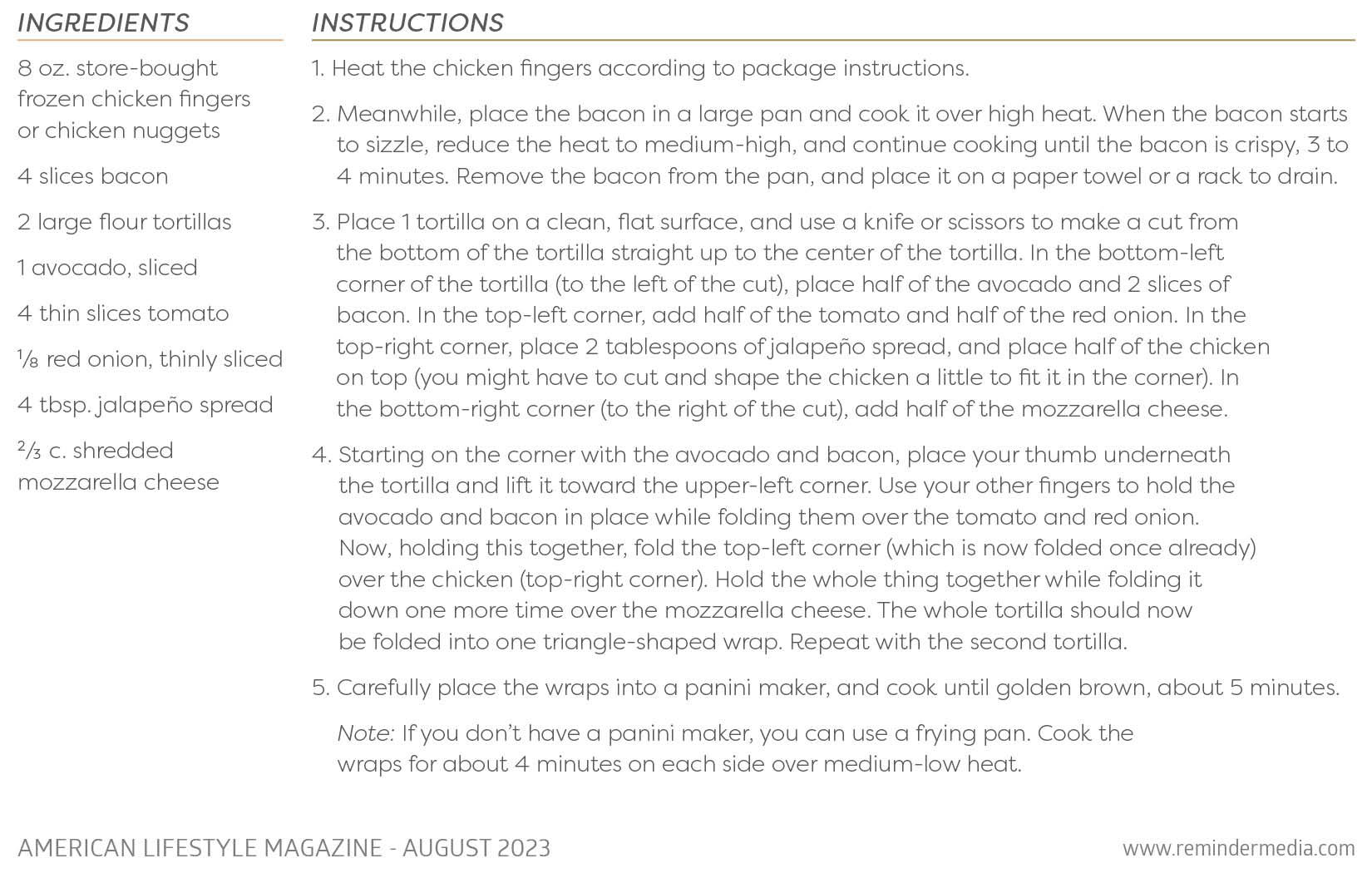
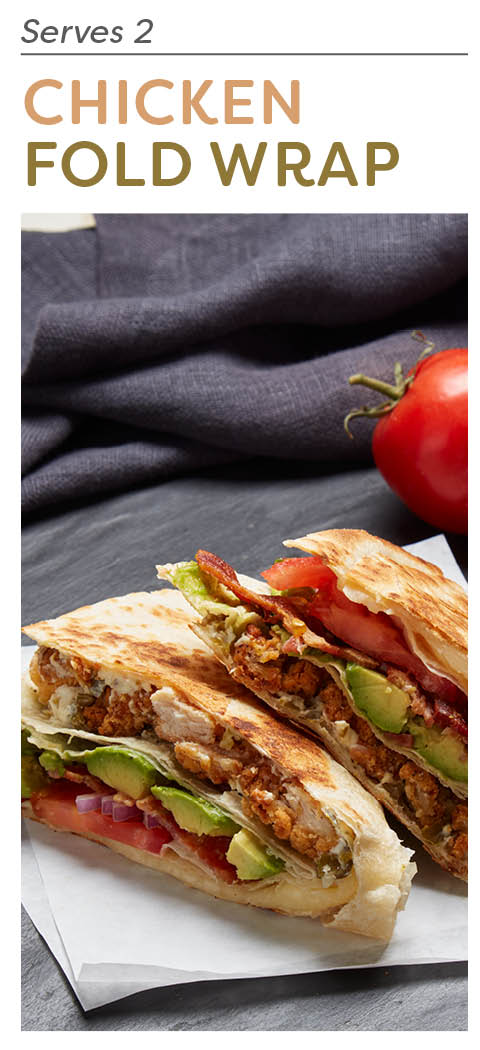
recipe by alexandra johnsson
photos by toni zernik
The first time I had a sandwich similar to this was at a small Swedish coffee shop, and I immediately went home to remake it. Not much beats this warm and toasty sandwich with lots of flavor and melted mozzarella. For this recipe, I use my homemade pesto, but if you’re in a rush you can use store-bought. When I want to switch it up, I add some cream cheese and mashed avocado as well.
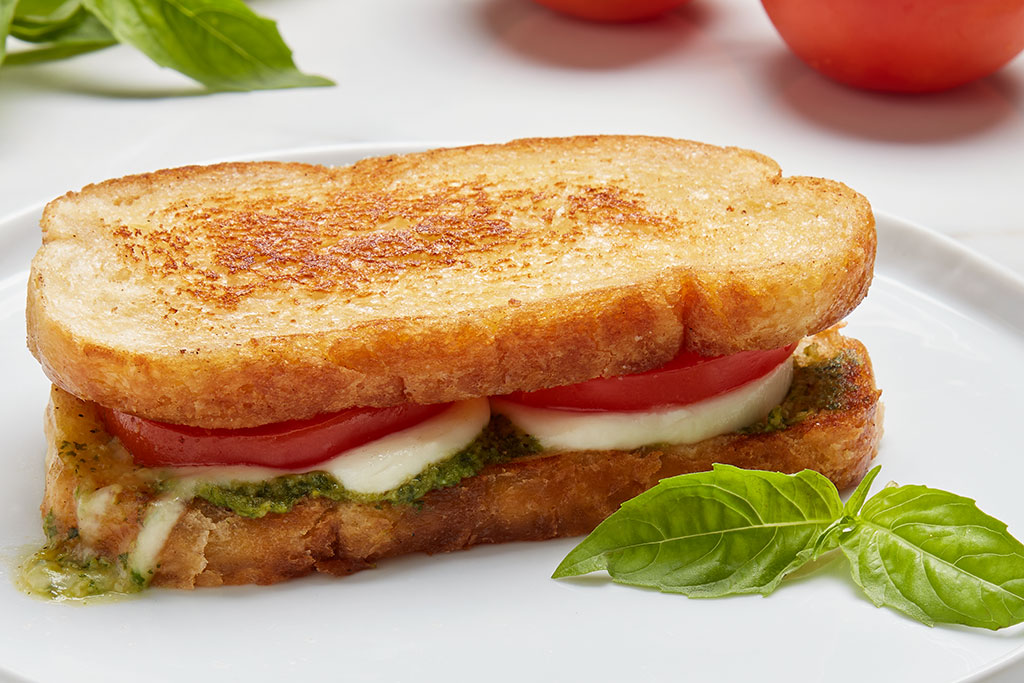
Serves 2
Note: You can make the sandwiches in a panini press instead of using a frying pan.
